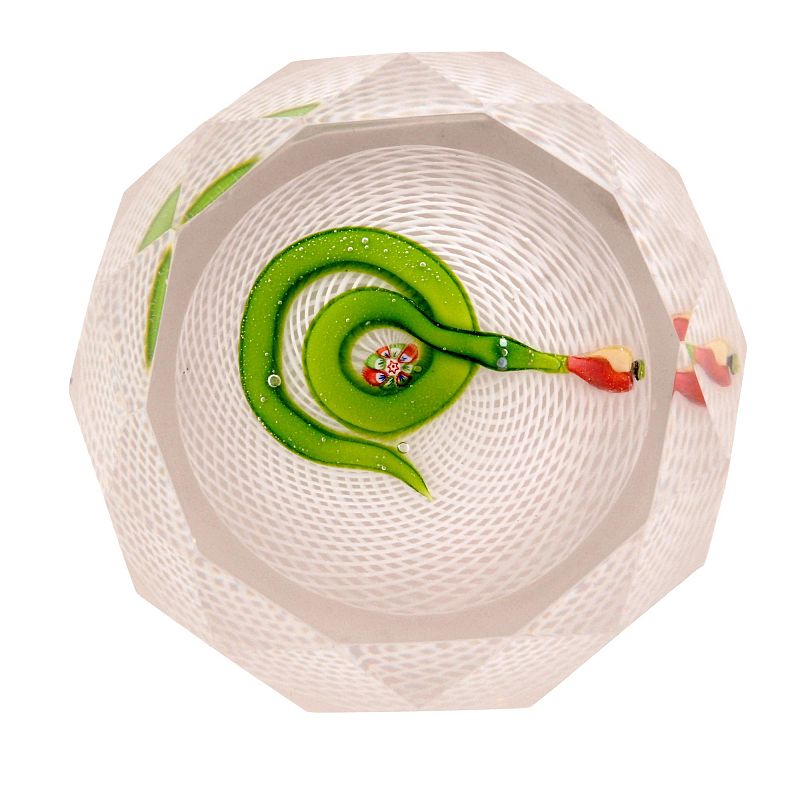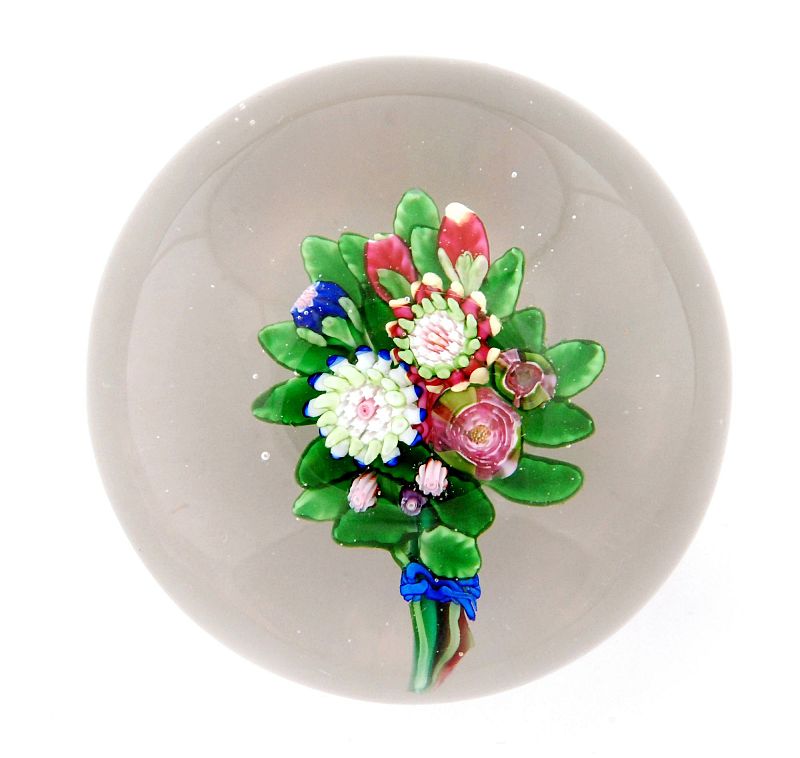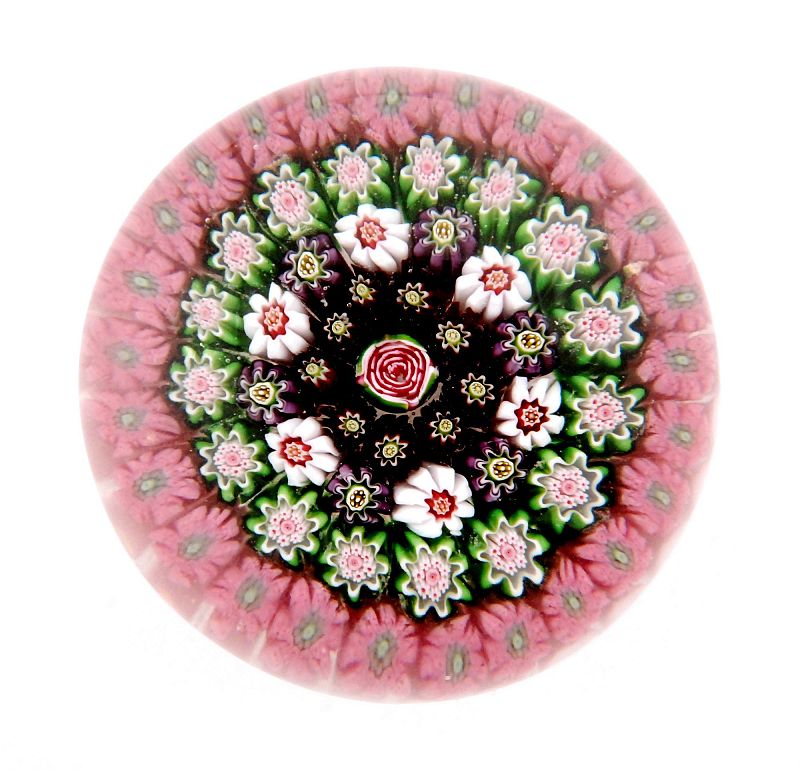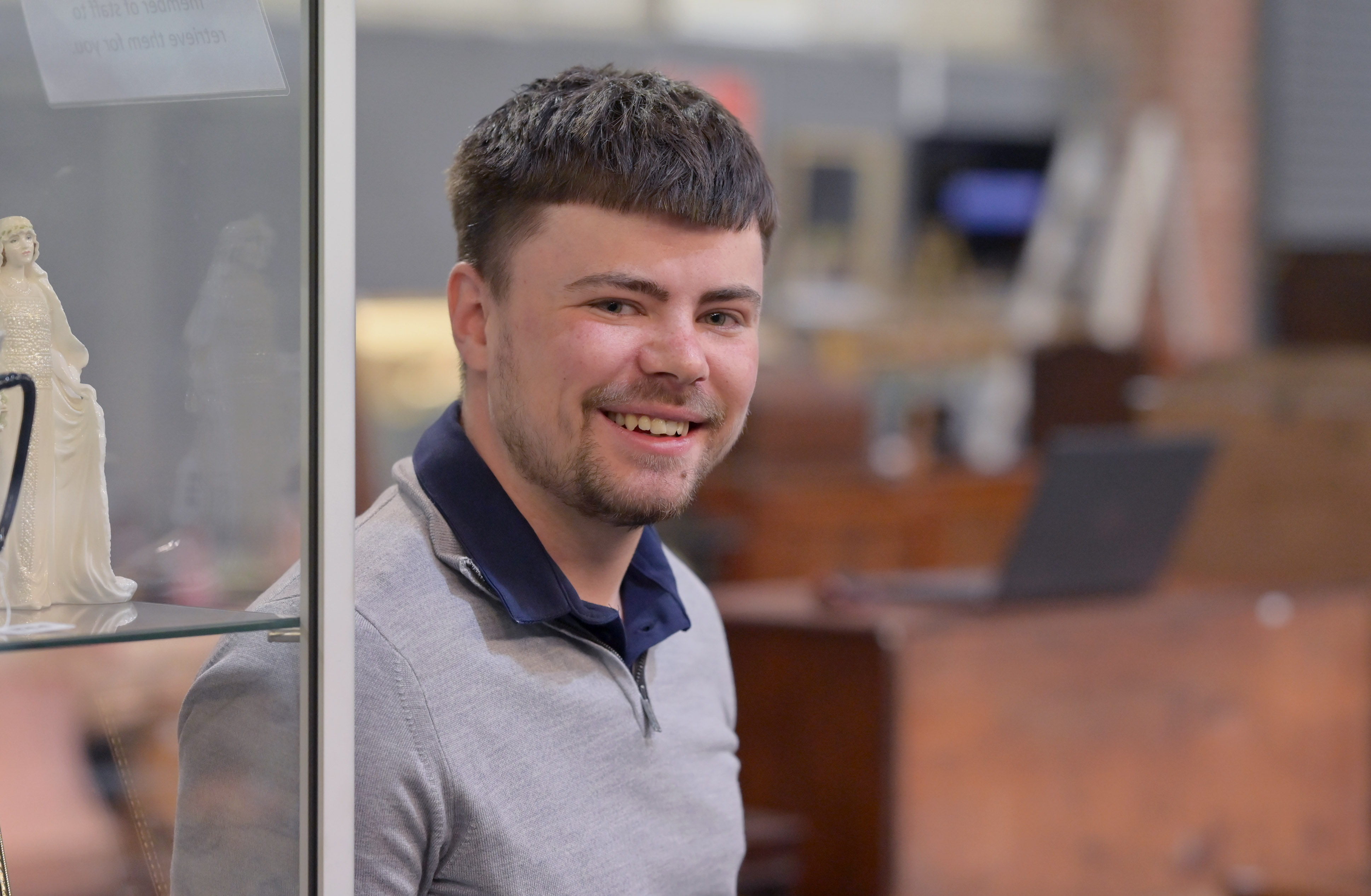Collecting glass paperweights
Paperweight collecting often begins with a fascination for these unusual gem like creations, then comes the desire to know more about them! Who made them, how are they made, where did they come from and of course their inherent value.
Paperweights have a rich and glorious history spanning many years and countless countries however it remains the creations of the great French glass houses which are amongst the most treasured and desired examples in the world. Exactly why the great glasshouses of France such as Baccarat, Saint Louis and Clichy began making paperweights in the mid-1800s remains a mystery. Some believe that the perfection of the millefiori paperweight process was being developed concurrently in Venice, France, and Bohemia around the same time however it was the French who were to become world leaders in this most exquisite craft.
By 1845 France was the undeniable paperweight centre of the world. However in a remarkably short period of time, and just as mysterious as their initial appearance and fantastic popularity, was their sudden inexplicable decline. After about 1860 the art of paperweight making all but disappeared for some eighty years. The paperweights made in France during the classic period of 1845 to 1860 remain amongst some of the most desired examples for collectors from around the world.
Of all the French makers Baccarat is unquestionably the most famous and renowned producer. Like all of the French glass houses they used two principle types of decorative techniques in the creation of their weights. The first being millefiori canes whose cross-sections revealed stars, spirals, and shamrocks or alternatively wonderful, almost comic silhouettes which ranged from dogs to devils.
Secondly was the development of three-dimensional lamp worked flowers encased within the glass. This process became both highly perfect and increasingly popular with the French makers. At Baccarat, flower choices included pansies, primroses, wheat flowers, clematis, buttercups, and, of course, roses. Fruits such as strawberries and pears were also frozen in glass, as were lizards, snakes, and other reptiles.
One of Baccarat’s toughest competitors was the firm of St. Louis whose artisans could do pretty much everything Baccarat’s could. In addition they had a Venetian-inspired innovation of their own being the crown. These hollow, somewhat-flat balls had sides made of alternating designs of lattachino, which met at the apex of the weight at a single piece of cane. Like Baccarat’s, some of St. Louis’s paperweights were faceted to give the viewer small windows to reveal the beauty and complexity of the design within.
There were numerous other paperweight makers in 19th-century France, including the highly regarded Clichy, whose trademark cane rose appears in some 30 percent of all the paperweights produced by the company. Like its French counterparts, Clichy often inserted a cane into its paperweights whose cross section was the first letter of its name, helpful when attempting to identify who the original creator of a weight was.
Starting a collection
Collecting glass paperweights often starts as a personal thrill and grows to become a lifelong passion. Collections of quality and excellence can he based on many factors including style, theme, colour, technique, or maker. Particular designs, such as single flowers, floral bouquets, or fruit clusters give ample opportunity for specialized theme collections.
Most collectors, however, soon begin to develop a strategy. There are many different approaches to collecting paperweights. The reason for collecting makes a vast difference in the collection that develops. If you collect strictly for fun then choose what pleases the eye and do not be concerned with long-term investment. On the other hand if investment is your driving force then a strategy and knowledge of the market must be developed quickly. Happily, most collectors are somewhere in between, with a strong appreciation of the beauty and uniqueness of paperweights, along with an inherent awareness of their value.
The factors which considerably influence the value of a piece are design, workmanship, condition and rarity. Like beauty, design is in the eye of the beholder. Good colour and pleasing arrangement of canes, flowers or other motifs are extremely important.
Fortunately, workmanship can be judged objectively. Poor or faulty workmanship shows up in a weight as an imperfection. Although few weights are flawless, major imperfections do affect the value of a piece. In addition, the glass surrounding the subject should be carefully scrutinized because imperfections in any part of the glass will have a direct influence on the value of a paperweight.
The overall condition of a paperweight is important when contemplating its purchase. Scratches, chips, and bruises may appear on the surface. If enough glass is present in the dome, the weight may be saved by grinding and polishing, a process that involves removing an even layer of glass from the entire weight.
Even today, choice paperweights can still be found at flea markets and dusty antique shops for incredibly low prices, however this is extremely rare. Serious collectors find most of their pieces through paperweight dealers, private sales, and in auction houses. The rarest and finest antique and modern weights still command top prices with record prices not only in the tens of thousands but in the hundreds of thousands! The real joy of collecting paperweights is that you can get going for a very modest amount and grow as your confidence grows! One undeniable observation is that these little spheres of wonder never fail to surprise or delight anyone who holds them!
If you would like to discuss selling or buying paperweights at auction please contact Will Farmer for further advice
Posted on 13 August 2020
Be in the know
Sign up for auction email alerts so you never miss another sale at Fieldings!
Register now





